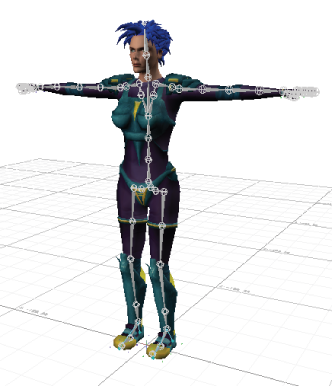Before you can use the Definition tab to map the skeleton bones in your character to the nodes understood by the HIK solver, you must set up your character in a basic T-stance that provides HIK with crucial information about the proportions of the skeleton and joint transformations of your character.
The T-stance of your character must match the description and example given below as closely as possible in order for the inverse kinematics and retargeting solvers to produce accurate results for your character. Without a properly configured T-stance, the solvers will base all of their operations on faulty data, and will likely produce skewed, awkward or unexpected poses.
The T-stance has the following requirements:
A typical T-stance is shown in the following image:

HIK can be used to control quadrupeds as well as bipeds. If you are creating a characterization for a quadruped character, you must set up the skeleton in a stance where the front and back limbs and all fingers and toes of the character are fully-extended towards the floor. See Stance.
 Except where otherwise noted, this work is licensed under a Creative Commons Attribution-NonCommercial-ShareAlike 3.0 Unported License
Except where otherwise noted, this work is licensed under a Creative Commons Attribution-NonCommercial-ShareAlike 3.0 Unported License